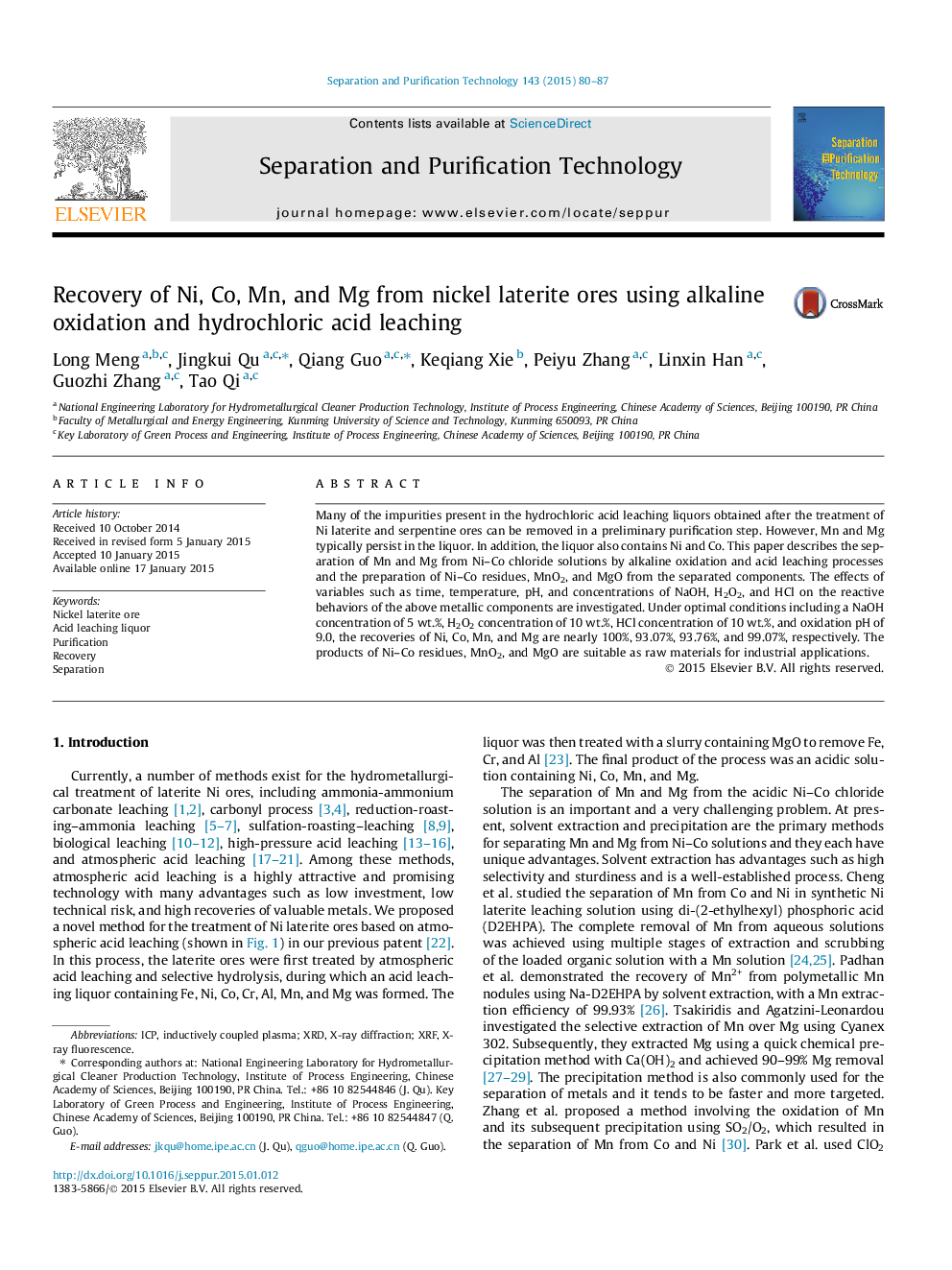| Article ID | Journal | Published Year | Pages | File Type |
|---|---|---|---|---|
| 640543 | Separation and Purification Technology | 2015 | 8 Pages |
•Mn and Mg were separated from Ni–Co chloride solutions.•Alkaline oxidation and acid leaching were the used as the separation processes.•Variables such as time, temperature, and pH were employed for investigation.•Ni, Co, Mn, and Mg were recovered in ∼100%, 93.07%, 93.76%, and 99.07% yields.
Many of the impurities present in the hydrochloric acid leaching liquors obtained after the treatment of Ni laterite and serpentine ores can be removed in a preliminary purification step. However, Mn and Mg typically persist in the liquor. In addition, the liquor also contains Ni and Co. This paper describes the separation of Mn and Mg from Ni–Co chloride solutions by alkaline oxidation and acid leaching processes and the preparation of Ni–Co residues, MnO2, and MgO from the separated components. The effects of variables such as time, temperature, pH, and concentrations of NaOH, H2O2, and HCl on the reactive behaviors of the above metallic components are investigated. Under optimal conditions including a NaOH concentration of 5 wt.%, H2O2 concentration of 10 wt.%, HCl concentration of 10 wt.%, and oxidation pH of 9.0, the recoveries of Ni, Co, Mn, and Mg are nearly 100%, 93.07%, 93.76%, and 99.07%, respectively. The products of Ni–Co residues, MnO2, and MgO are suitable as raw materials for industrial applications.
